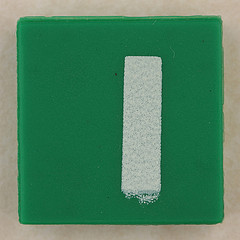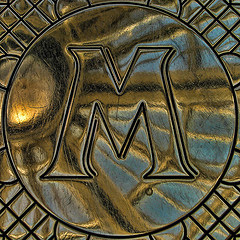
Gumshoe? What does that have to do with bankruptcy?
To file a bankruptcy in chapter 7 or chapter 13 you
must be an investigator or a bit of a sleuth!
Asset Values
You have to dig into and explore the value of your assets. It will take some looking to figure out what that stamp or baseball card collection is worth. It’s not just the catalog value (which is easy enough to find) but the value is what you could sell them for at the time you file the bankruptcy case. You’ll have to look at what similar items sold for at auction or what the dealer will pay you for them. This will usually be far less than any listed catalog values.
You might have to search online at eBay or Craigslist. These are both good sources for musical instruments and your electronics such as a computer or television. Make sure you use the year, make, model number and specs when comparing items. Also see what the items have sold for on eBay not just the starting auction prices or the buy it now price. Items are often listed high to see what the buyer might be able to sell it for. What the item is actually sold for is a far more accurate valuation and is generally less than a listing price.
Sometimes people think that if it is a new unused item, the value must be what they paid for it. Rarely ever is that the case. In fact, I have never seen that to be so. Values these days are on the decline and just taking something home causes a minimum of 50% depreciation off that initial sales cost.
$55,000 valuation with actual fair market value of $1,200
One of my clients had an extensive stamp collection which he valued using catalogs. His valuation was $55,000 which I seriously questioned. This was not something that I could protect for him and I had him take the collection into a shop where they bought and sold such items to confirm that it really was an issue. It turned out that the real world value was just $1,200. There was a high sentimental value and a low dollar value which worked out well for the case.
I also know of someone who purchased an expensive set of real silverware that was still in the shrink-wrapped box. They insisted the value was at least $10,000 and they were concerned about getting a bankruptcy exemption for it. I insisted they look more into the value and see what they could actually sell the set for. The amount it could be liquidated for was only $1,500 and I had no trouble protecting it under the circumstances of the case.
Debts and Liabilities
You also need to investigate all your liabilities and become a Gumshoe. Sometimes you need to call for a payoff value (auto and home loans) and other times you need to investigate the mailing address. If you are filing for a bankruptcy you’ll need to list the correspondence address or a bankruptcy notice address — not the payment mailing address. Often there are addresses in the small print on the back side of your statements and it’s not always easy to locate these addresses. If you run your credit report the listed address is usually not correct but may be. You can generally locate the appropriate correspondence address on the statement, sometimes on the front and often in small text on the back.
Be Careful of Assumptions and Do Your Digging
The take away here is do your research and don’t make assumptions. Don’t assume the value has any relationship to what you paid for the item. Do look into it and investigate the value. With the internet and available options anything can be valued. Also make sure you have the correct notice addresses for your creditors.
More Bankruptcy G’s:
- Wisconsin Bankruptcy Lawyer, Bret Nason, Garbage In, Garbage Out
- New York Bankruptcy Lawyer, Jay Fleischman says G is for Garnishment
- Philadelphia Suburban Bankruptcy Lawyer, Chris Carr MBA says G is for Garnishment
- Daniel J. Winter, Chicago Bankruptcy Lawyer, G is for Garnishment
- Los Angeles bankruptcy attorney, Mark Markus explains that G is for Gifts
- Colorado Springs Bankruptcy Attorney Bob Doig says G is for Goals
- Detroit Michigan Bankruptcy Attorney, G is for Guilt
Image Credit: Leo Reynolds.

What happens to my home owner’s association (HOA) dues if I file for bankruptcy?
It depends. If you owe HOA dues from before your case is filed, they are discharged in the bankruptcy as long as no lien has been recorded. There is no exception to discharge for pre-petition HOA dues in the Bankruptcy Code. As long as you file your bankruptcy case before the HOA records a lien, then the past due amounts are wiped out. If you don’t pay the HOA dues after you file your chapter 7 bankruptcy case, those dues will not be discharged. They will continue to accumulate until the property title is no longer in your name.
Where it gets confusing is when the property is foreclosed. A foreclosure may take many months to complete. Until that foreclosure is completed and title is transferred the HOA dues continue to accrue and all the dues that accumulated after the date of filing the bankruptcy petition remain due and payable by the debtor under the U.S. Bankruptcy Code.
If you are living in the condo until the foreclosure process is completed, you could pay the HOA dues each month and avoid the problem entirely. If you can, wait to file your case.
If you have surrendered the property in the bankruptcy proceeding, you likely aren’t paying the HOA dues because you have to pay rent somewhere to live.
If you haven’t paid the dues during the bankruptcy will it be a problem for you?
It may not be. This situation often resolves itself in the debtor’s favor because the lender has to clear the title before selling the property. Once the lender pays the dues to clear the title the debt no longer exists. Since the debt claim is based on pre-bankruptcy agreements, which have been discharged, the lender may conclude it has no recourse against the debtor. This means they may not come after you for the HOA dues even though technically you may still owe a portion of them.
Lastly, you could file a chapter 13 bankruptcy case. The 9th Circuit Court of Appeals has held that condo fees that come due after a Chapter 13 case is filed are discharged at the conclusion of the case. This is good news for people who no longer want their condo but the title continues to be in their name after they have walked away from it. Even if title stays in your name for the entire five years that you are in the chapter 13 bankruptcy, if you have surrendered the condo there will be no personal liability for any unpaid HOA dues. When the plan is concluded, you’ll truly have a fresh start.
For more Bankruptcy H’s see:
- Colorado Springs Lawyer Bob Doig – H is for Homestead
- Jacksonville Attorney J. Dinkins G. Grange, Esquire – Home: Can the Trustee Take It?
- Wisconsin Lawyer, Bret Nason – Honest but Unfortunate Debtor
- Philadelphia Suburban Lawyer, Chris Carr – H is for Honesty (and Fraud Avoidance)
- New York Bankruptcy Attorney Jay S. Fleischman – H is for Household
- Los Angeles Attorney, Mark J. Markus – H is for House
- Clair Shores Michigan Attorney Kurt OKeefe – H is for How Much is Your Home Worth
Image credit: Leo Reynolds

What income do I need to disclose in my bankruptcy?
- Retirement income
- Pensions
- Social security
- Stock distributions
- Trust disbursements
Means Test Income
All debtors filing bankruptcy are required to take a “means test” which will determine if they need to file Chapter 7 or Chapter 13 bankruptcy.
For purposes of the means test, the U.S. Bankruptcy Code defines current monthly income as including: “any amount paid by any entity other than the debtor (or in a joint case the debtor and the debtor’s spouse), on a regular basis for the household expenses of the debtor or the debtor’s dependents (and in a joint case the debtor’s spouse if not otherwise a dependent)…” Benefits received under the Social Security Act, payments to victims of war crimes or crimes against humanity on account of their status as victims of such crimes, and payments to victims of international terrorism or domestic terrorism on account of their status as victims of such terrorism are excluded from the means test. Stimulus payments from the Covid-19 pandemic are also excluded from the means test but could be an asset.
The means test looks back at the past six months of income as defined above. If you file a bankruptcy in January, the past six-month (or look back) period is July through December. It is this six-month period that will determine what your average annual income is. You must compare your average annual income based on the past six-month period to the median average for your state to see if you qualify to file a Chapter 7 bankruptcy. If your income is too high to file a Chapter 7 you may still qualify to file a Chapter 13.
All of it gets listed one way or another:
|
|
Loans don’t count, one-time contributions don’t count and expense reimbursements also don’t count.
For another slant see Jay Fleischman’s I is for Income .
More I’s:
- In Forma Pauperis by Colorado Springs Attorney Bob Doig
- Insiders by Los Angeles Bankruptcy Attorney, Mark J. Markus
- Insolvency, Wisconsin Lawyer, Bret Nason
- IRA By Philadelphia Suburban Bankruptcy Lawyer, Chris Carr
Image credit: Leo Reynolds

Couples often ask if they should file separate bankruptcy petitions.
“We have our own debts and don’t think we should file
together,“ they say.
California is a community property state
Those debts the couple thinks are separate usually are not. It doesn’t matter if the debts are only in the name of one spouse. Unless the debt was incurred prior to the marriage or the couple had entered into a valid prenuptial agreement, it is a community debt even if it is only in one name. If the debt is in one name and there is a valid pre-nuptial agreement to keep all finances separate then it would be a separate debt. In addition, if there is not enough separate property to pay separate debts the community assets can be reached by creditors.
Filing Jointly
If both spouses need the protection of the bankruptcy court it is usually easier, more efficient and more economical to file jointly. A joint filing will only require one filing fee. Separate filings require each spouse to pay a filing fee.
All these must be listed whether filing jointly or separately:
|
|
If the couple files separately, they need to list everything anyway so it may make sense to file one time and list everything together.
Separate Households
If a couple has been separated for a while and set up two distinct households it might be easier to file separately. Sometimes the spouses cannot communicate well and one spouse doesn’t have all the information needed on the other spouse’s income and expenses. In that case it would likely be better to file an individual bankruptcy.
Sometimes spouses don’t want to communicate and feel as though they would rather not go through this process together.
Nothing in the law requires a couple to file jointly. The decision should depend on the specific circumstances of the couple involved.
More Bankruptcy J’s:
- New York Bankruptcy Lawyer, Jay Fleischman thinks J is for Jay
- Wisconsin Attorney Bret Nason says J is for Jail
- Suburban Philadelphia Lawyer Chris Carr says J is for Judgment Lien
- Colorado Springs Attorney Bob Doig says J is for Judgment Liens
- Los Angeles Bankruptcy Attorney Mark Marcus says J is for Justice
Image credit: Leo Reynolds

Certain accounts can’t be touched during a bankruptcy filing and the 401k is one of them.
Under the bankruptcy code a 401k is not property of the estate and creditors have limited access to it.
The federal government has set up bankruptcy as a way of helping people get back on their feet and recover from financial challenges so it makes sense that retirement funds would be protected. If it was required that people first use up all their retirement funds, these same people would likely require government assistance when they reach retirement age.
Warning If Only One Participant
An exception to retirement plans not included in the estate exists for those that have only one participant, such as single employee corporate plans, and some other plans originating in self-employment. These plans may be property of the estate and may be vulnerable to creditors unless subject to an exemption. Get good professional advice if this describes your retirement plan.
Borrowing Against a 401k
Be careful of borrowing against a 401k plan because outstanding 401k loans can present a problem in bankruptcy. Since they are not considered debts, they are not dischargeable. They are also not considered special circumstances that are deducted when calculating the long form means test. So, while you may have to repay the loan it won’t help your case.
In a Chapter 13, the 401k loan can be repaid as part of the plan.
If you are laid off or switch employers the entire loan balance becomes due and must be paid within 90 days to avoid a tax penalty. Tax penalties on early withdrawals can be steep. There is likely an early withdrawal penalty of 10% plus income tax is withheld at 20%. You can pay this balance with a credit card. If you do it right before filing bankruptcy, you’ll have another problem, as the charge will almost certainly be challenged as abuse.
The important warning is – do not use 401k funds to pay off dischargeable credit card debt.
Other Lawyers Playing the Bankruptcy Alphabet Game:
- Dangers of Borrowing Against 401K, Los Angeles Attorney, Mark J. Markus
- Keys, New York Bankruptcy Lawyer, Jay S. Fleischman
- Keeping Debt Collectors at Bay, Wisconsin Lawyer, Bret Nason
- Kids, Colorado Springs Attorney Bob Doig
- Knight in Shining Armor, Philadelphia Suburban Lawyer, Chris Carr
Image credit: Leo Reynolds

The automatic stay is a major advantage to filing for Bankruptcy.
After you file, no one can take any action to collect your debt, enforce a judgment, garnish your wages, levy your bank accounts, take your property or continue with a lawsuit unless they go into federal bankruptcy court and lift the bankruptcy stay. There are some exceptions to this such as the requirement to keep paying child support.
Who lifts the bankruptcy stay?
A mortgage holder or automobile lender might want to lift the bankruptcy stay so they can take some action to pick up a car or foreclose on a mortgage. In order to lift the stay, a motion must first be filed in court and heard by a judge. With this process you need to respond to the motion to get the opportunity to convince the court that the creditor is wrongfully trying to take your property, or you aren’t really behind in your payments, or any other defense you may have to the motion to lift the stay.
Most often happens in a chapter 13 when payments are behind.
This most often happens in a Chapter 13 if you fall behind in your payments to a secured creditor. They want to repossess the automobile or foreclose on the home. If you have been making your payments it is hard for them to do anything. If you haven’t been making your payments they don’t want to wait three to five years for your chapter 13 case to be concluded.
What can you do?
- You may be able to get extra time to pay or you may be able to restructure your bankruptcy plan payments to catch up. If your requests are reasonable, and it appears that you can follow through, a judge will likely grant them.
- If you have received a motion to lift the bankruptcy stay, be sure and talk to your attorney about it. You have limited time to respond to the motion and ask for a hearing or the creditor will get what they ask for.
- You’ll want to examine your situation carefully and decide if a change in plan will work or if there really isn’t a workable option. Maybe you can’t afford to make the payments or keep the property. It might be time to consider letting that property go.
L is also for:
- Lawyer, by Wisconsin Bankruptcy Lawyer, Bret Nason
- Lien by New York Bankruptcy Lawyer, Jay S. Fleischman
- Listing Assets and Debts in Bankruptcy Los Angeles Attorney, Mark J. Markus
- Long Term Payments, Chapter 13 Plans by Philadelphia Suburban Lawyer, Chris Carr
- Luxuries by Colorado Springs Bankruptcy Attorney Bob Doig
Image credit: Leo Reynolds

The means test is used to determine eligibility for Title 11 of the
United States Code Chapter 7, or the plan payments
in a Chapter 13 bankruptcy case.
It was designed to prevent debtors who have sufficient financial means to pay a portion of their debts from liquidating them entirely in a chapter 7 bankruptcy. Creditors pushed for the inclusion of a means test because they wanted to weed out those who could pay something.
During the Great Depression, the test was used to screen applicants for such programs as Home Relief in the United States, and starting in the 1960s, for benefits such as those provided by the Food Stamp Program. In 2005, the United States bankruptcy laws changed by adding a means test to purportedly prevent wealthy debtors from filing for Chapter 7 Bankruptcy. This 2005 BAPCPA change is found in 11 U.S.C. § 707(b).
If you are in the military or have a majority of non-consumer debt you are exempt from the means test income guidelines. Non-consumer debts are mainly those incurred for business or profit purposes, tax debt and tort debt.
Is Your Income Less Than the Median?
Debtors whose income is below the state’s median income pass the means test. To check your median income you must first determine your household size. Gross wages, business income, pension, family support, unemployment, regular gifts and other income is included. Social security payments are not included.
The median annual California incomes as of May 2020 are:
1 person – $62,938
2 persons – $83,435
3 persons – $92,735
4 persons – $106,530
5 persons or more – Add $9,000 for each person in excess of 4.
If your income is below the median you go no farther with the form or the calculations. STOP, you are done. You are eligible to file for chapter 7 bankruptcy and do not need to complete the rest of the form.
What If My Income is Over the Median?
In Marin and surrounding counties, we often see the situation where the income exceeds the median but there is not enough left to make payments to the creditors. In this case the long form of the means tests must be completed. The long form factors in expenses like:
|
|
|
Most people who need help find that they pass the means test.
If you pass the means test it means that you can file a chapter 7 bankruptcy. However, just because you can file under chapter 7 doesn’t mean it is the best chapter for you to file under. If you are trying to catch up with mortgage payments, aren’t making your HOA dues payments or have unsecured liens on your property a chapter 13 would likely benefit you more.
Please see the following for more M posts:
Image Credit: Leo Reynolds

The California Northern Bankruptcy Court is the area
or district that our firm covers.
California has four bankruptcy court districts:
- California Central Bankruptcy Court
- California Eastern Bankruptcy Court
- California Northern Bankruptcy Court, and
- California Southern Bankruptcy Court.
Each district is made up of different divisions. Each division has a different court location and different practices and procedures.
People sometimes ask if I will go to a different district so I can take their case. This is something I rarely do because of the additional time it would take me to handle the case. It is usually best for both the potential client and myself, to refer the person to a knowledgeable colleague that works in that district. Not only could I have substantial additional travel time but in most cases I would need to study the local rules and determine what the local customs and practices are.
Isn’t Bankruptcy Law Federal and the Same in Every Court?
While it’s true that the federal law is the same for all bankruptcy courts, it’s equally true that each district has its own specific procedures. Not only that, but each division within a district has its own local rules and practices. California Northern Bankruptcy Court has an Oakland Division, a San Jose Division, a Santa Rosa Division, and a San Francisco Division. Each of these divisions has its own judge(s) and trustees and its own local practices and policies.
What Counties are in the California Northern Bankruptcy Court District?
California Northern Bankruptcy Court encompasses the following:
Oakland Division:
|
San Francisco Division:
|
San Jose Division:
|
Santa Rosa Division:
|
If you are considering filing bankruptcy find out what division and district your prospective attorney is familiar with. It is generally best to choose one who has some experience in the court where you need to file.
Other California Divisions can be found at the United States Ninth Circuit Court Locator.
Additional N posts and a place to find bankruptcy attorneys in other areas:
- NACBA by Wisconsin Bankruptcy Lawyer, Bret Nason
- Naked by New York Bankruptcy Lawyer, Jay S. Fleischman
- Negative Impact on Credit and Bankruptcy by Philadelphia Suburban Lawyer, Chris Carr
- Negative Notice by Jacksonville Bankruptcy Attorney J. Dinkins G. Grange
- Notice by Colorado Springs Bankruptcy Attorney Bob Doig
- Numbers and New Bankruptcy Laws by Los Angeles Bankruptcy Attorney, Mark J. Markus
Image Credit: Leo Reynolds

Organizing is something that may be hard to do.
When things feel out of control it is normal to try and ignore them.
Many of my clients have been putting their heads in the sand and leave mail unopened and unorganized until they see me. It can be overwhelming when those bills and collection letters come flooding into your mail box.
The first step to getting a handle on things is to tackle organizing that unopened mail with all those bills and collection letters. For now, it doesn’t matter what is in there. It could be a mixture of opened mail, unopened mail, opened mail in the envelopes or something else entirely different. Before you can file any chapter 7, or chapter 13 bankruptcy, you need to find and organize all your financial information.
Set aside a block of time to begin, even if it is only a twenty or thirty minute window. Gather up all that paper and find a place to begin to sort it. Ideally, you want somewhere where you can leave the project out as you work on it so that you can return to it until it is completed. Have several grocery bags or boxes nearby. You may want one for trash, one for recycling and one for documents that need to be shredded. Clearly label each bag or box.
Use the steps below to start organizing and get as far as you can in your allotted time. When you are ready, set aside another block of time and continue through the steps. Repeat until complete.
Organizing Mail Steps
- Open everything. Use a letter opener or some other tool to make it easier. Toss all the envelopes that the bills and statement arrived in into your recycle bag. That extra outside wrapper is not needed.
- If you are unable to pay the bills and are planning to file bankruptcy, or you pay your bills online, you can also toss the return envelopes into that same recycle bag.
- Sort everything by type – credit card bills in one pile, medical bills in another pile. Utility bills and ongoing household expenses in another, etc.
- Sort each type file by creditor or sender. All PG&E together, all Chase cards together, all hospital bills together and all Aunt Sally’s letters together. Put all Chase collection letters (from agencies and lawyers) with the original Chase bills.
- If you have more than one account with a creditor (like two separate Discover card accounts) separate those accounts into different piles.
- Organize each creditor pile by date with the most recent on the top.
- Finally, place each stack into a file folder and label the folder with the creditor name and the last 4 digits of the account number. In my office we prefer no staples are used because they will only need to be removed before scanning. If you bring us paper, we will scan it and return it to you and staples only slow down the process.
- If you’re able it could be useful to scan those documents into electronic PDF files or download them from the creditor’s websites.
Congratulations! Whether you are looking at debt consolidation plans, a bankruptcy or just want to know how much you owe, your bills are now organized and ready to work with.
More Bankruptcy O’s:
- Obligations by Colorado Springs Bankruptcy Attorney Bob Doig
- Omitted creditor, St. Clair Shores MI attorney Kurt OKeefe
- Options to Bankruptcy, Suburban Philly Bankruptcy Lawyer, Chris Carr
- Orders by Wisconsin Bankruptcy Lawyer, Bret Nason
- Organization in Bankruptcy, Los Angeles Attorney, Mark J. Markus
- Own by New York Lawyer, Jay S. Fleischman
Image Credit: Leo Reynolds

Preference sounds good, right? Maybe, maybe not.
If you pay your taxes or court ordered child support before paying other creditors, that’s okay. If you make your house mortgage payment or auto payment before paying your Visa bill, that’s okay. So, what is a preference payment? What can’t I do?
Insider Preference Payments
Friends and relatives are considered to be insiders because they are closer to you than most creditors. Within one year before you file for bankruptcy, you can’t pay your mom back the $2,000 she loaned you before you pay the Visa bill. It is considered a preference payment and the trustee can have it set aside. In other words, the trustee can sue your mom to recover that $2,000 payment.
Why can they do that? Because it is considered unfair under the U.S. Bankruptcy Code. The code is concerned with fairness to all parties; it is the overarching principle that guides the code. Fairness to you the debtor and to all the creditors that you owe money to.
You can’t make any preferential payment to a friend or family member in the year before filing bankruptcy or the trustee can recover it and will be likely to go after your friend or family member.
In that one-year period before filing for a bankruptcy, be careful of repaying your:
|
|
|
Your brother would likely be upset to find out that the money you gave him to repay your loan will be taken by the trustee. Either wait to file the bankruptcy so a full year passes, or wait to make the payment until after the bankruptcy case. There is nothing in the law that stops you from paying back a loan after it has been discharged in bankruptcy. As long as you wait, you can repay anyone you want to.
What About Other Creditors?
Any payment over $600 to a credit card company or other creditor (medical provider, personal loan, other loans) within 90 days of filing bankruptcy is also a preference payment that can be set aside. It is considered unfair to pay one creditor but not all of them.
A preference payment doesn’t have to be cash, check or money. It can also be a transfer of your property. For example, you owe your sister some money and she agrees to accept your bicycle in trade. Talk to a knowledgeable local bankruptcy lawyer about your payments. They’ll ask you questions and dig into your facts so you can avoid any unpleasant surprises.
More P’s:
- Pay Advice, New York Lawyer, Jay S. Fleischman
- Payment, Jacksonville Attorney, J. Dinkins G. Grange
- Planning, Los Angeles Attorney, Mark J. Markus
- Preferences, Colorado Springs Attorney Bob Doig
- Property of the Estate, Wisconsin Lawyer, Bret Nason
- Property of the Estate, Philadelphia Suburban Lawyer, Chris Carr
Image Credit: Leo Reynolds
Contact Us
Our Blog
Recent Posts
Bankruptcy eBook
Guide to Eliminating Debt
Through Bankruptcy for
California Consumers.